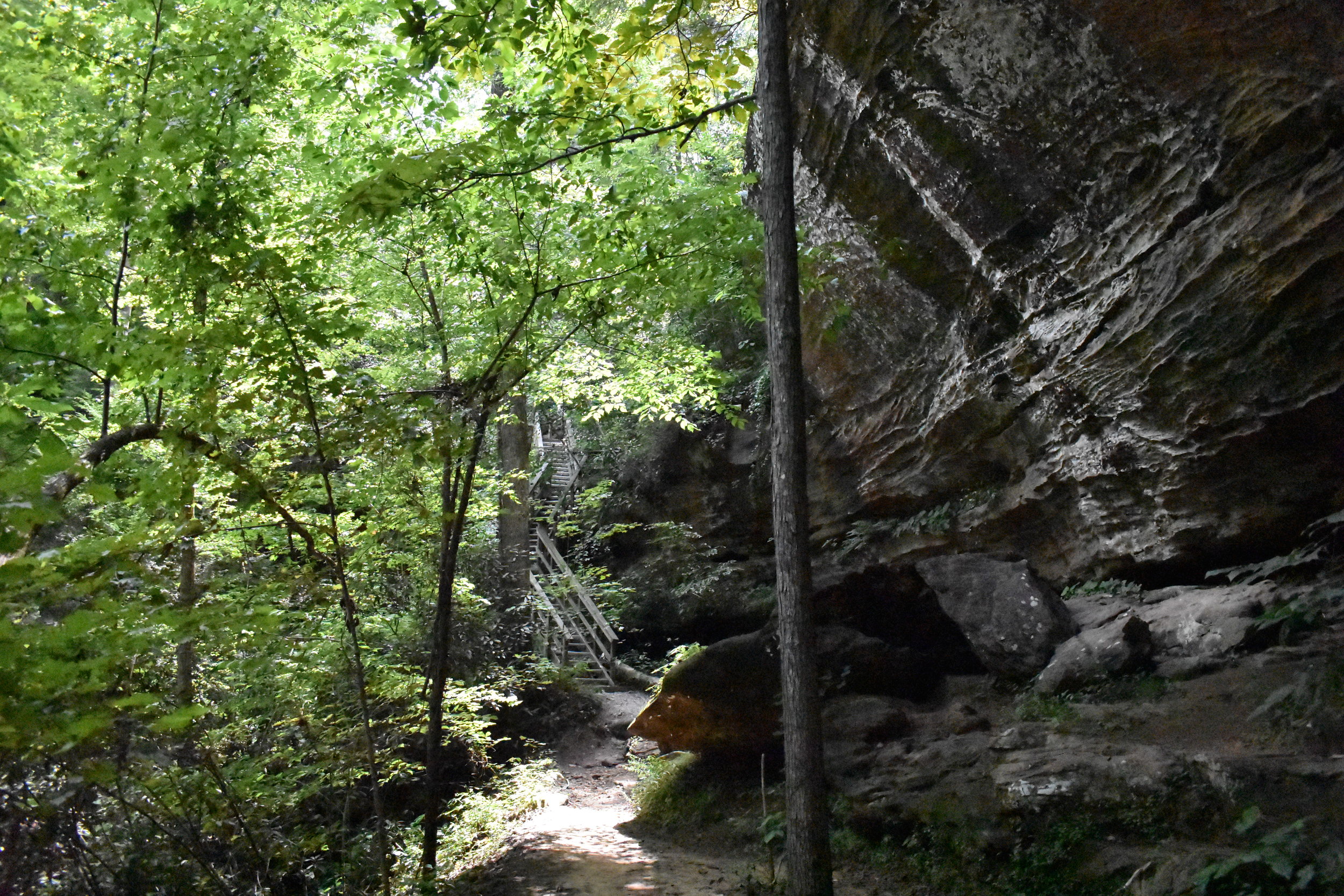The Double Arch of Sky Bridge (Red River Gorge, Kentucky)
While Ryan and I were hiking Rock Bridge, we ran into a couple who mentioned that they had just seen a great arch at Sky Bridge. We had never heard of this trail before and in our Red River Gorge trail guide, the photos of Sky Bridge had looked disconcertingly similar to Natural Bridge (the most famous arch in the Gorge). Our trail guide claims it is the “most heavily used” trail in all of RRG, with “one of the most picturesque and heavily photographed arches in the region.” So when we were left with a choice of which hike to do for our four-year anniversary, we chose to check out this mysterious (and apparently popular) trail that neither of us had managed to hear about in our years of going to the Gorge.
If you’re looking for a difficult trail, this one isn’t it. It reminded me of the easiest of the Natural Bridge trail: paved most of the way to the arch, with no strenuous climbing or off-trail bushwhacking. However, the hike still provides stunning views over Devil’s Canyon and the deep ravine of Swift Camp Creek.
Sky Bridge, like Natural Bridge, can be walked across, and it’s worth continuing on and completing the 0.8-mile loop instead of turning back once you’ve reached the arch. The trail hooks back around to take you underneath the arch, where you can view one of Sky Bridge’s most unique features: it’s a double arch. A single pillar punctuates the underside of the arch, making two windows to frame your view of Devil’s Canyon.
Ridge-top arches like Sky Bridge are created by wind and rain carving away soft rock layers, leaving only a sandstone cap over the gap between the rock and earth below. At first, a cave-like opening called a rockhouse is formed in the side of the cliff. The rockhouse erodes until an opening is cut beneath the ridge, called a lighthouse. Eventually, the elements polish and cut the opening until it is a true arch like you see below. This process takes thousands of years.
On past Gorge hikes I’ve seen Eastern Fence Lizards, and on the Rock Bridge trip, we saw a Red Salamander, but this time, the trail was teeming with Five-Lined Skinks (it’s possible that all or some of these were Southeastern Five-Lined Skinks, a rarer species that inhabit moist areas, but the only notable distinction between the two is in the size of scales beneath the tail and Ryan and I weren’t examining them that closely). The Five-Lined Skink is one of five skink species that can be found in Kentucky, and it normally spends its time crawling under rocks, woodpiles, or leaf debris. Its coloration makes it very distinctive, with a brown body and tan-colored stripes from nose to tail. Most (or maybe all) the skinks we saw were juveniles (you can distinguish them from adults by the bright blue tails). These guys were hard to get a photo of, as they’re secretive by nature and like to dart underneath rocks to escape, but I did manage to get one to pose for me while it was sunning itself on the sandstone.
As we were leaving, we stopped at several stunning lookout points along the drive, which provided wonderful views of the Clifty Wilderness. At 13,000 acres, the Clifty Wilderness is one of two areas in Kentucky protected by the Wilderness Act of 1964, meant to lend federal protection to the most biodiverse places in North America.
The Act reads, “A wilderness, in contrast with those areas where man and his own works dominate the landscape, is hereby recognized as an area where the earth and its community of life are untrammeled by man, where man himself is a visitor who does not remain.”
Thanks for reading! If you enjoyed this post, don’t forget to hit the heart button below!






















